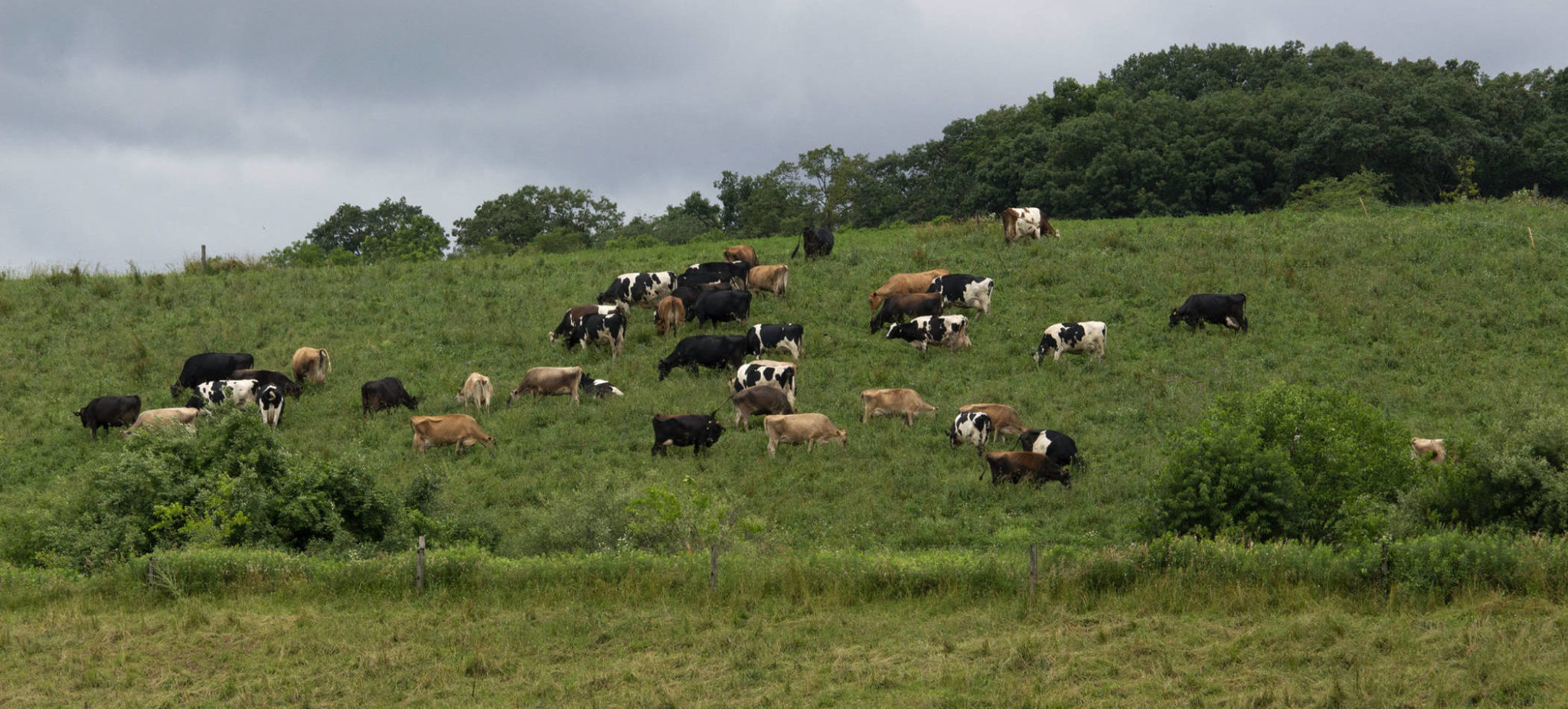Crop Livestock Integration
Currently in the United States, most organic producers separate livestock and pastures from cropping systems, relying on off-farm purchases of certified organic feed for their animal herds, or fertility for their crop fields. This can increase production costs, especially with the price premium for organic grain, as well as increase greenhouse gases for transportation. Integrating crops and livestock on a multi-function operation could have multiple benefits and the potential to improve the profitability of these kinds of operations.
Researchers at Iowa State University, the University of Minnesota, and Rodale Institute conducted a four-year project, funded by the USDA Organic Research and Extension Initiative, to evaluate the production, environmental, and economic benefits of growing cash crops with forage crops for grazing, including small grains and hay crops for livestock feed.

The Benefits of Integrating Crops & Livestock can include:
Interested in integrating crops and livestock on your farm?
PROJECT DESIGN
We compared two crop rotations:
- Pasture-winter wheat-soybean-pasture and
- Pasture-winter rye/hairy vetch-corn-pasture
and utilized grazing dairy steers on the cover crops as a method of integrating livestock and organic cropping systems.
What We’re Monitoring
Results So Far
Consumer preference: Beef from steers grazing winter wheat had higher overall liking compared to beef from steers grazing winter rye. For breeds, crossbreds comprised of Jersey, Normande, and Viking Red has higher overall liking than purebred Holsteins.
Human health: A lower and healthier omega-6/3 ratio was found in the back fat of crossbreds of Jersey, Normande, and Viking Red, as well as crossbreds of Montbéliarde, Holstein, and Viking Red compared to the back fat of purebred Holsteins.

